Victorian Era Feminine Hygiene
Victorian Era Feminine Hygiene
.

.
HISTORY OF FEMININE HYGIENE PRODUCTS
.
Until disposable sanitary pads were created, cloth or reusable pads were widely used to collect menstrual blood. Women often used a variety of home-made menstrual pads which they crafted from various fabrics, or other absorbent materials, to collect menstrual blood.
.
Disposable menstrual pads grew from a Ben Franklin invention created to help stop wounded soldiers from bleeding, but appear to have been first commercially available from around 1888 with the Southball’s pad. The first commercially available American disposable napkins were Lister’s Towels created by Johnson & Johnson in 1888**. Disposable pads had their start with nurses using their wood pulp bandages to catch their menstrual flow, creating a pad that was made from easily obtainable materials and inexpensive enough to throw away after use. Kotex’s first advertisement for products made with this wood pulp (Cellucotton) appeared in 1888. Several of the first disposable pad manufacturers were also manufacturers of bandages, which could give an indication of what these products were like. [Wikipedia]
.Invention
**The pads ended up being just too cutting edge for the times, and the product was quickly considered a failure. [source]
.
Menstrual cups weren’t far behind. The first was invented just after turn of the century.
.
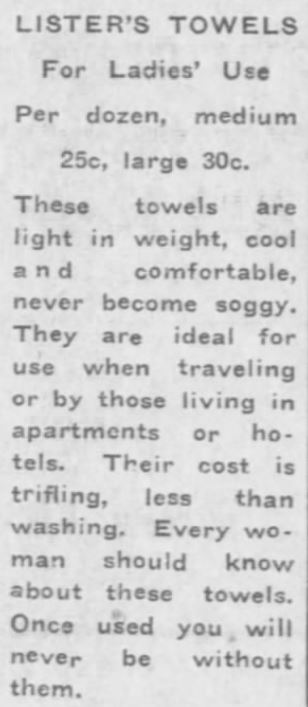
Lister’s Towels advertisement in Arizona Republic. Phoenix, Arizona, 7 June, 1906. According to Wikipedia, advertisements in the Victorian era were intentionally vague as taboos prevented open discussion of feminine hygiene, birth control, or menses.
.

.
.
LADIES’ FAULTLESS SERVIETTE SUPPORTER
.
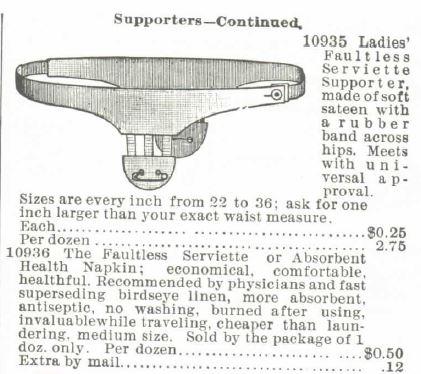
Ladies’ Faultless Serviette Supporter, advertised in the Montgomery Ward & Co. catalog, spring and summer, 1895
.
Item No. 10935: Ladies’ Faultless Serviette Supporter, made of soft sateen with a rubber band across hips. Meets with universal approval. Sizes are every inch from 22 to 36; ask for one inch larger than your exact waist measure. Each = $0.25. Note the safety pins that hold the “safety belt” in position at the correct depth to fit snugly against the body.
.
Item No. 10936: The Faultless Serviette or Absorbent Health Napkin: economical, comfortable, healthful. Recommended by physicians and fast superseding birdseye linen, more absorbent, antiseptic, no washing, burned after using, invaluable while traveling, cheaper than laundering, medium size. Sold by the package of 1 doz. only. Per dozen = $0.50. Extra by mail (whatever that means) = $0.12.
.
“Serviette” simply means “table napkin”…and in this case, napkin as in ‘Sanitary Napkin.’
.
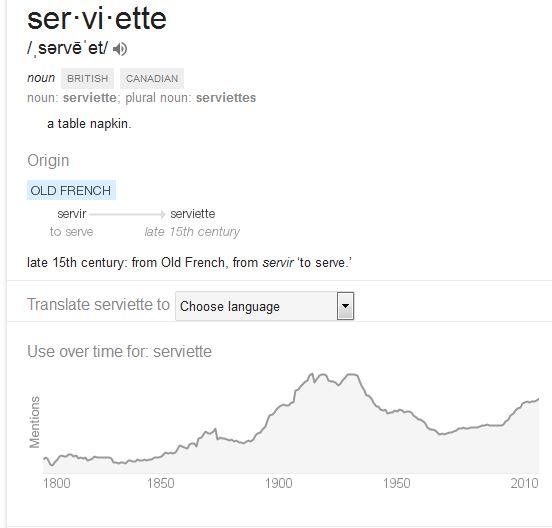
Definition of Serviette, courtesy of Google
.

.
SATEEN COMBINATION BELT WITH HOSE SUPPORTERS AND POINTS FOR SAFETY BELT
.
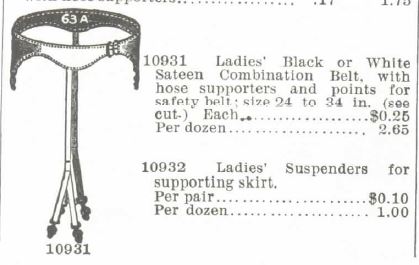
Ladies’ Black or white Sateen Combination Belt, with hose supporters and points for safety belt. Montgomery Ward & Co Spring and Summer catalog, 1895. The “Safety Belt” held the serviette or fabric in place.
.
Item No. 10931: Ladies’ Black or White Sateen Combination Belt, with hose supporters and points for safety belt; size 24 to 34 inches. (see cut.) Each = $0.25 Note: the hose supporters fall along the outside of the thighs; the safety belt points fall center front and center back. The “cut”, a.k.a. engraving/carving (image), shows the side view as if the wearer were turned in profile.
.
Item No. 10932: Ladies’ Suspenders for supporting skirt (not pictured, but is pictured below, in the Sears, Roebuck & co. catalog image). Per paid $0.10. Note: such suspenders were worn to distribute the weight of the lady’s skirt to her shoulders as well as helping to keep the skirt up where it belongs about her waist. The suspenders were worn beneath the blouse, unlike men’s suspenders which were worn atop the shirt and beneath the waistcoat/vest.
.

.
LADIES’, MISSES’, AND CHILDREN’S SHOULDER BRACES. LADIES’ BLACK OR WHITE COMBINATION BELT
.
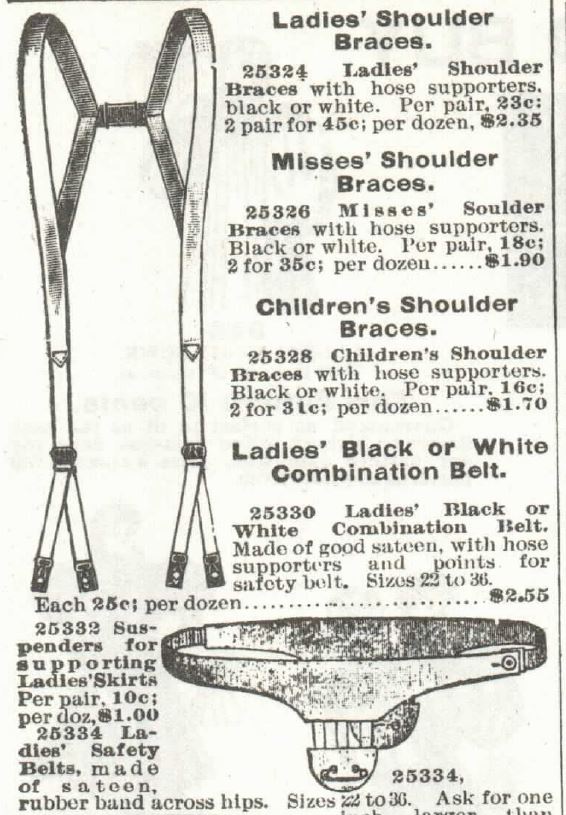
Ladies’ Shoulder Braces and ladies’ Black or White combination Belt. Sears Roebuck and Co. Catalog no 104, 1897, page 335.
.
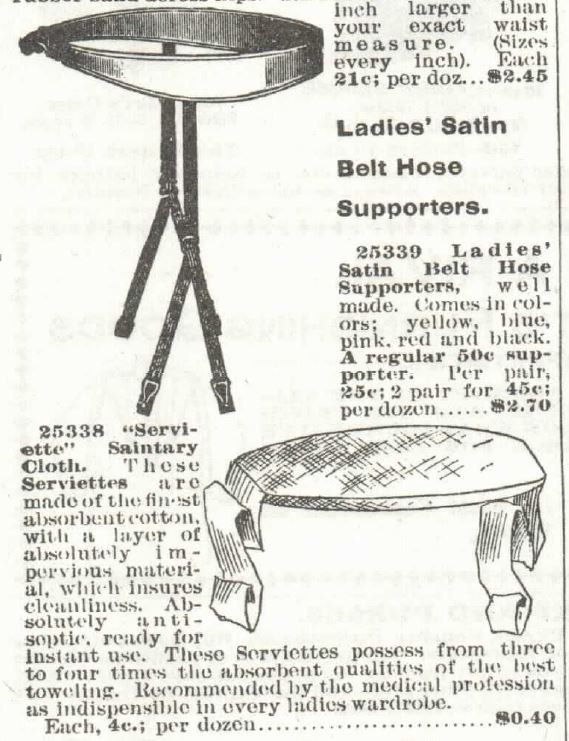
Sanitary Cloth. 1897 Sears Roebuck and Co. Catalog No. 104, p 335.
.
Item 25338 “Serviette” Sanitary Cloth. These Serviettes are made of the finest absorbent cotton, with a layer of absolutely impervious material, which insures cleanliness. Absolutely antiseptic, ready for instant use. These Serviettes possess from three to four times the absorbent qualities of the best toweling. Recommended by the medical profession as indispensiable [sic] in every ladies wardrobe. [sic] Each, 4c.; per dozen…$0.40.
.
At least the Sears offering of sanitary napkins are apparently meant to be washed. Other than the ridiculously wealthy, the 19th century Americans didn’t harbor “use and dispose” attitudes. The disposable mentality belonged to the 20th century and beyond.
.
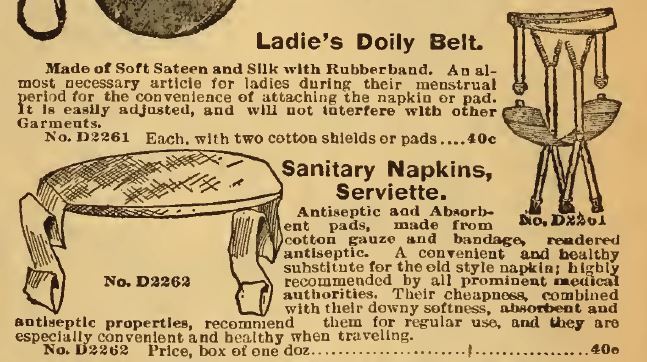
Ladie’s [sic] Doily Belt. Sanitary Napkins. 1898 Sears, Roebuck and Co. Catalogue No. 107
.
No. D2261 Ladie’s Doily Belt [sic]. Made of Soft Sateen and Silk with Rubberband [sic]. An almost necessary article for ladies during their menstrual period for the convenience of attaching the napkin or pad. It is easily adjusted, and will not interfere with other Garments. Each, with two cotton shields or pads…40c.
.
Item D2262 Sanitary Napkins, Serviette. Antiseptic and Absorbent pads, made from cotton gauze and bandage, rendered antiseptic. A convenient and healthy substitute for the old style napkin; highly recommended by all prominent medical authorities. Their cheapness, combined with their downy softness, absorbent and antiseptic properties, recommend them for regular use, and they are especially convenient and healthy when traveling. Price, box of one doz…40c.
.

.
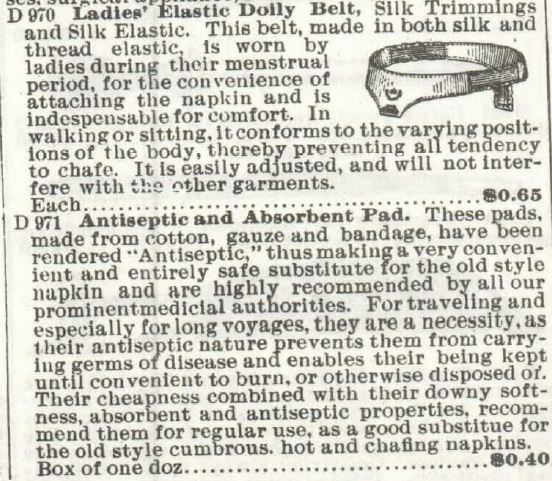
Ladies’ Elastic Doily Belt “…is worn by ladies during their menstrual period, for the convenience of attaching the napkin”… 1897 Sears, Roebuck, & Co. Catalog, No. 104.
.
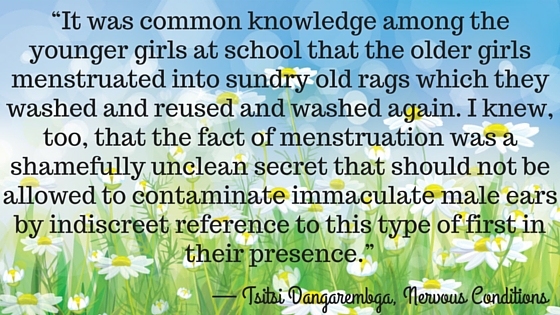
.

.
DOUCHING
.
Women had long used syringes (at least by the 17th century) for douching. Both Sears, Roebuck & Co. and Montgomery, Ward & Co. catalogs sold various style syringes for feminine hygiene. According to the advertisements, the devices were used for post-coital cleanliness and to (with additives such as alum, baking soda, or vinegar) reduce the risk of pregnancy. Douches were apparently employed during menses as well as post-partum (which may have contributed to “childbed fever”, a.k.a. peritonitis following childbirth). Advertisements were intentionally vague as a newspaper reporter had been arrested in 1882 for obscenity.
.
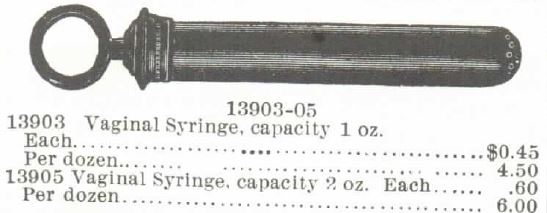
Vaginal Syringe for sale by Montgomery Ward catalog 1895
.
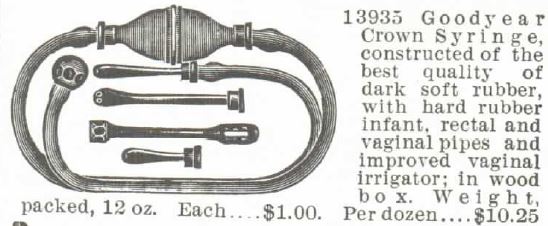
Crown Syringe with vaginal and rectal pipes for sale by Montgomery Ward catalog 1895
.
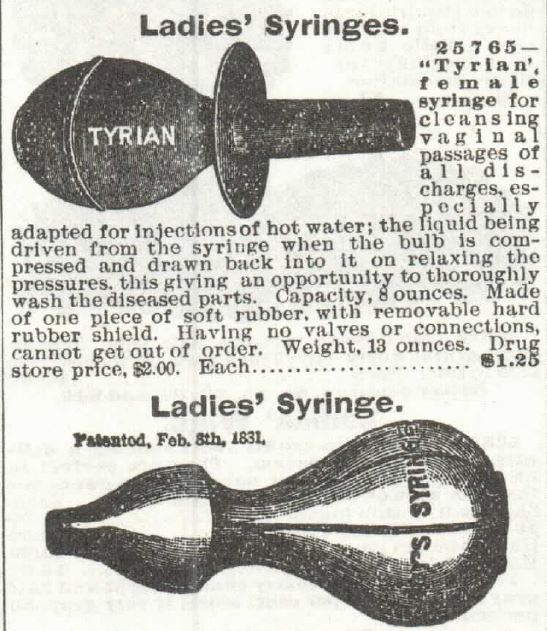
1 of 2: Ladies’ syringes vaginal discharge sold by the 1897 Sears, Roebuck & Co. Catalogue No. 104, p341.
.
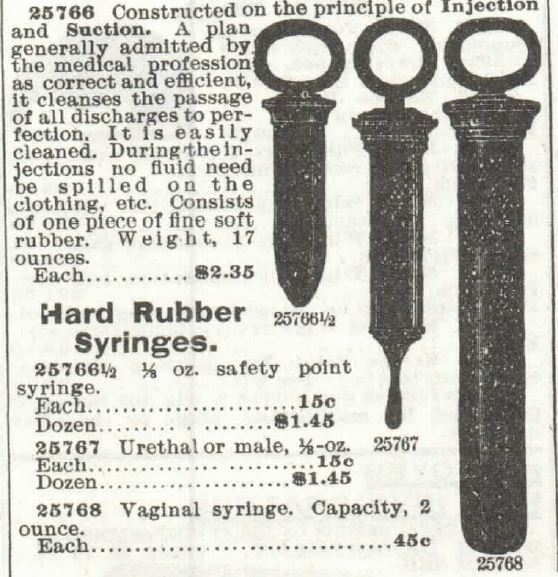
2 of 2: Ladies’ syringes vaginal discharge sold by the 1897 Sears, Roebuck & Co. Catalogue No. 104, p341.
.
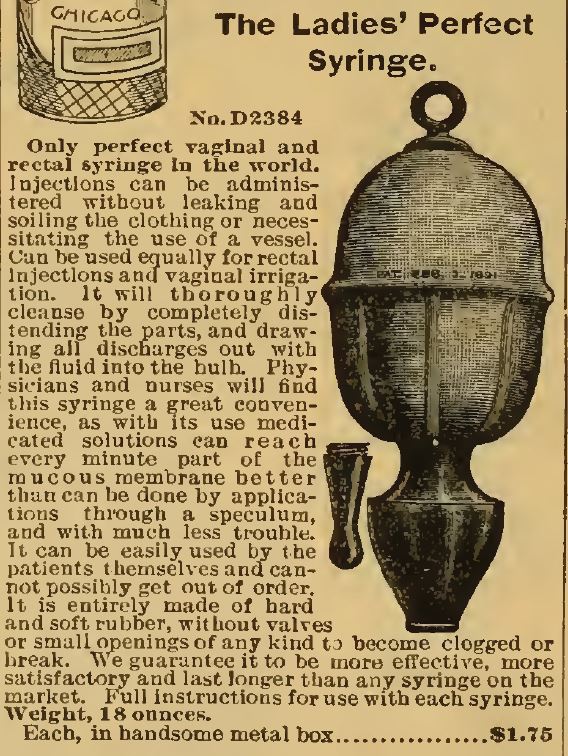
Ladies’ Perfect syringe. 1898 Sears, Roebuck and Co. Catalogue No. 107
.

.
UTERINE PROLAPSE
.
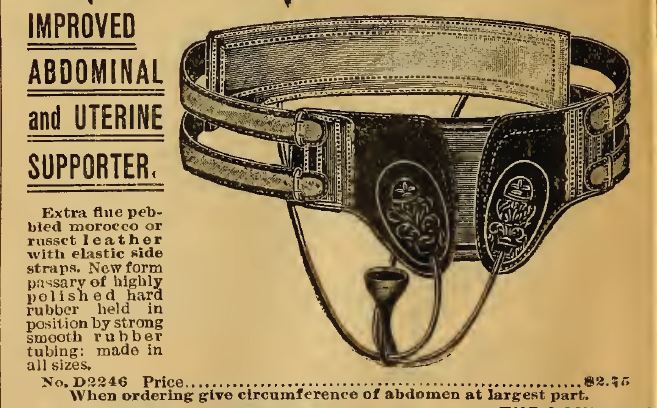
Abdominal and Uterine Supporter. 1898 Sears, Roebuck and Co. Catalogue No. 107
.
Similar products were advertised in Sears, Roebuck & co. catalog of 1897 and Montgomery, Ward & co. of 1895. Uterine Prolapse must’ve been relatively common and without the surgical intervention of today, devices such as this kept bits tucked inside.
.

.
While I’m fascinated with all things Victorian, I’m grateful I was born well beyond it. Thank goodness sanitary belts were part of a bygone era when I reached puberty. I’ll read books set in the past, I’ll write of the Victorian era with much affection, but I’ll remain here–with all the modern conveniences–thank you.
.

.
Related Articles
.
.
.
Victorian Era Feminine Hygiene
Updated May 2022
Copyright © 2016 Kristin Holt LC

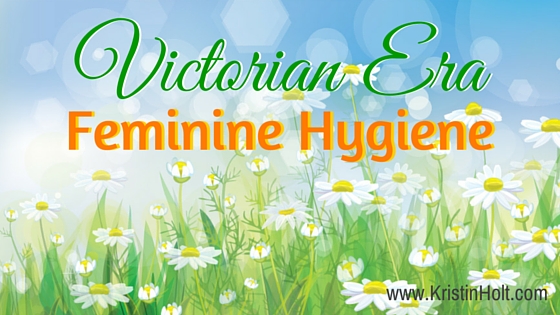
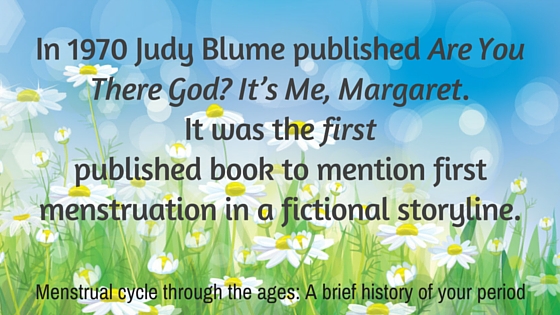
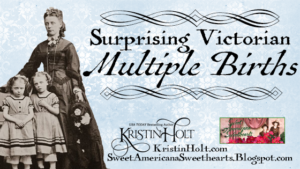
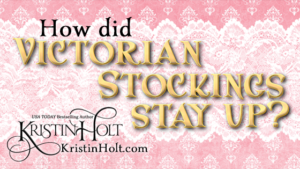
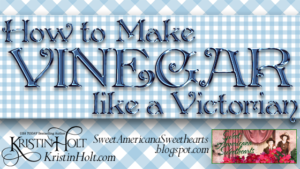
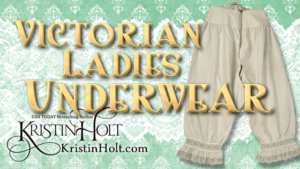
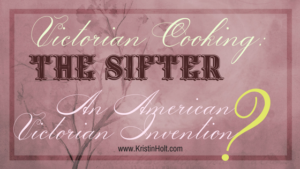
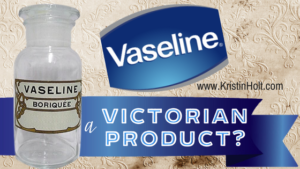
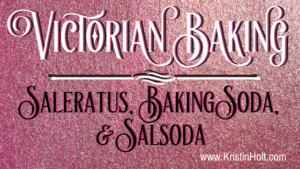


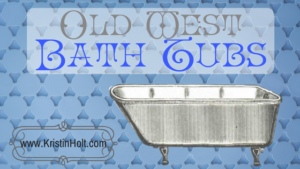

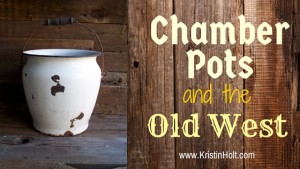

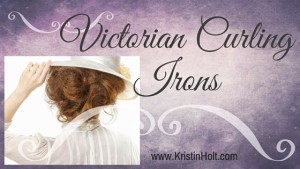


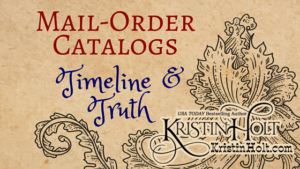


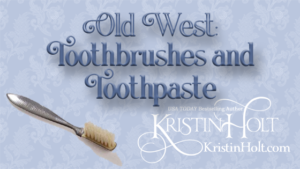
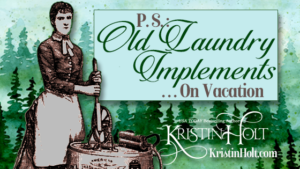
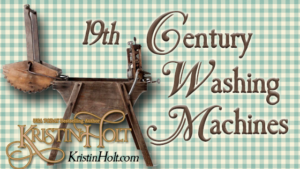
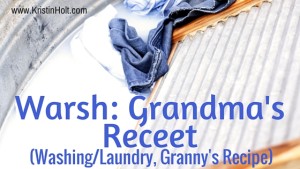
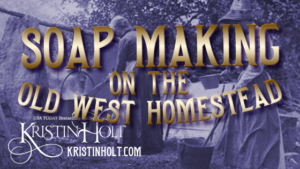









Great, fascinating post. Very informative.
Thank you, Charlene!